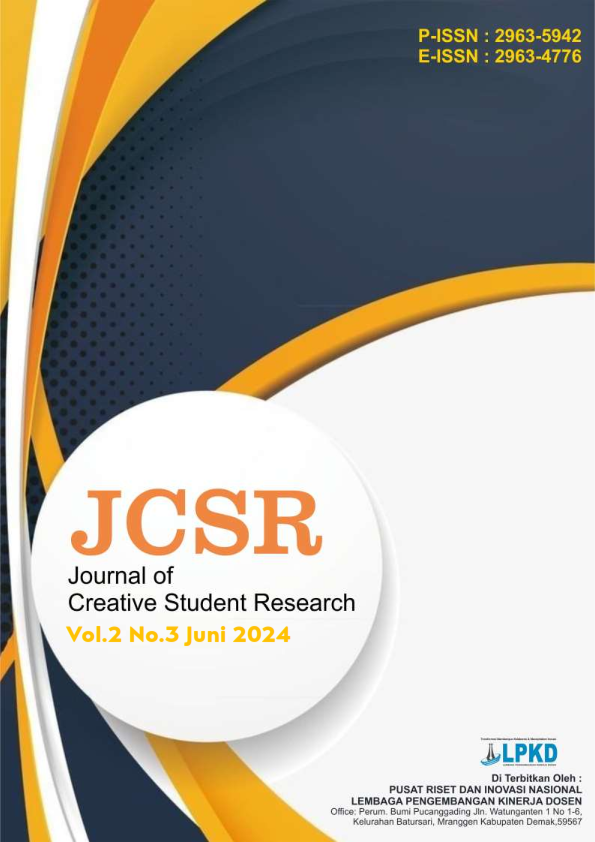Pengaruh Resistansi Koil dan Konduktivitas Termal Busi terhadap Daya Sepeda Motor Injeksi 150 cm3
DOI:
https://doi.org/10.55606/jcsr-politama.v2i3.3950Keywords:
thermal conductivity of spark plug, ignition coil, dynamometer, powerAbstract
Spark plugs and ignition coils are important components in creating sparks in the combustion chamber. Sparks can be weakened by spark plug electrodes that are worn out due to time of use. Worn electrodes will cause the gap to increase, thus requiring a higher secondary voltage. This study aims to determine the effect of ignition coil resistance and spark plug thermal conductivity on 150 cm3 injection motorcycle power. The method used is an experimental method with a quantitative approach. The independent variables used in this study are ignition coil resistance with values of 3.0 Ω, 3.4 Ω, 3.8 Ω and spark plug thermal conductivity of nickel 90.9 W/m.K, platinum 71.6 W/m.K, and iridium 147 W/m.K. The results showed that the highest power was obtained at engine speed of 8500 rpm using ignition coil resistance of 3.0 Ω with spark plug thermal conductivity of iridium 14.10 hp, nickel 13.75 hp, and platinum 13.61 hp. The lowest power was obtained at engine speed of 5500 rpm using an ignition coil resistance of 3.8 Ω with a spark plug thermal conductivity of iridium 13.72 hp, nickel 13.67 hp, and platinum 13.59 hp.
Downloads
References
Abdullah, M. (2015). Aswaja Pressindo Metodologi Penelitian Kuantitatif.
Alifudin, M., Rijanto, A., & Zulfika, D. N. (2020). Analisis Variasi Hambatan Dan Tegangan Listrik Terhadap Uji Koil Cara Kerja Motor Bensin. Majamecha, 2(1), 32–44. https://doi.org/10.36815/majamecha.v2i1.735
Amrulloh, T., Paryono, & Irdianto, W. (2018). Pengaruh Penggunaan Spark Plug Iridium Dan Spark Plug Platinum Dengan Variasi Bahan Bakar Terhadap Daya Dan Top Speed Pada Sepeda Motor Honda Vario 150 Esp. Jurnal Teknik Otomotif Kajian Keilmuan dan Pengajaran, 2(E-ISSN: 2613-9316, ISSN: 2613-9324), 49–56.
Arends, B. P. M., & Berenschot, H. (1997). Motor Bensin (4th ed.). Ed. U. Sukrisno. Erlangga.
Bergman, T. L., Lavine, A. S., Incropera, F. P., & DeWitt, D. P. (2011). Fundamentals of Heat and Mass Transfer. John Wiley and Sons.
Ferguson, C. R., & Kirkpatrick, A. T. (2016). Internal Combustion Engines (Third ed.).
Jama, J., & Wagino. (2008). Teknik Sepeda Motor JILID 2. Direktorat Pembinaan Sekolah Menengah Kejuruan.
Marsudi. (2013). Teknisi Otodidak Sepeda Motor Bebek (1st ed.). Ed. W. Westriningsih. ANDI OFFSET.
Prasetiyo, A., & Rifdarmon, R. (2020). Analisis Variasi Penggunaan Busi Pada Sepeda Motor Yamaha Vixion Tahun 2015 Terhadap Daya, Torsi Dan Emisi Gas Buang. AEEJ : Journal of Automotive Engineering and Vocational Education, 1(1), 31–38. https://doi.org/10.24036/aeej.v1i1.4
Prihartono, J., & Irhamsyah, R. (2022). Analisis Konduktivitas Termal Pada Material Logam (Tembaga, Alumunium Dan Besi). Jurnal Teknik Mesin Presisi, 24(2), 49–54.
Rachmansyah, M. F., & Susilo, S. H. (2022). Campuran Ethanol – Nilai Oktan 92 Dan Konduktifitas Termal Busi Terhadap Daya Dan Emisi Motor 110 Cc. Jurnal Teknik Mesin, 1(1), 10–18. https://doi.org/10.33795/jmeeg.v1i1.3313
Rafsanjanu, S. P., et al. (2023). Perbandingan Peforma Motor Koil Standar Dan Busi Standar Dengan Koil Racing Dan Busi Racing Menggunakan Bahan Bakar Pertamax 98. Jurnal Sains dan Teknologi, 2(1). https://doi.org/10.58169/saintek.v2i1.157
Suarnata, P. P., Dantes, K. R., & Wigraha, N. A. (2019). Perbandingan Penggunaan Koil Standar Dan Koil Racing KTC Terhadap Daya Mesin Dan Konsumsi Bahan Bakar Pada Sepeda Motor Yamaha Mio Tahun 2006. Jurnal Pendidikan Teknik Mesin Undiksha, 5(3), 18–26. https://doi.org/10.23887/jjtm.v5i3.20265
Downloads
Published
How to Cite
Issue
Section
License
Copyright (c) 2024 Journal of Creative Student Research

This work is licensed under a Creative Commons Attribution-ShareAlike 4.0 International License.








